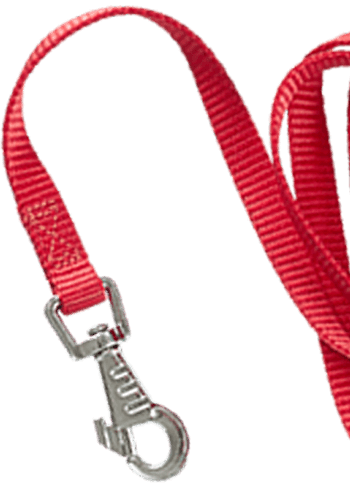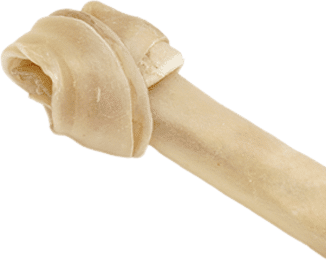


Bringing a new labrador puppy into your life is an extraordinary moment.
But, it can also be incredibly overwhelming. Caring for lab puppies is a commitment close to caring for a human child.
Yet, the effort is worth the reward.
And it’s not just families who love labrador puppies — this wonderful breed of canines makes its impact felt as search and rescue and support dogs in a variety of fields.
Labradors are the number one most popular family dog in America right now, and it’s because these lovely pooches have a warm, friendly temperament. The breed’s unique traits make them adaptable to all sorts of settings, whether it’s as a hunting dog, service support, or a family fido.
However, the only way to bring out these special traits and characteristic temperament is to make sure that you’re ready to take care of labrador puppies right from the start. There’s a lot to learn, so knowledge and awareness are necessary as you’re training your new best friend.
Let’s break down the A to Z’s of everything you need to know to raise a labrador puppy dog living his (or her) best life!
After the Beethoven classics and the Airbud series, Marley & Me filled a deep hole in our hearts. The way that Labrador Retriever worked his way into a young couple’s life and then grew along with their family was nothing short of miraculous.
It was miraculous because Marley & Me, the movie, started off as a book with the subtitle, “Life and Love with the World’s Worst Dog.” His owners had a whale of a time trying to keep up with their new animal.
Yet, despite Marley’s haphazard antics, he still managed to make a mark on his family — albeit while ruining furniture and upsetting gardens galore.
Sure, he was loveable, but he was also a menace. And with a little training and proper labrador puppy care, Marley would have been a completely different adult dog.
If you would like to get your own Marley one day, this is the place to start. Our guide will walk you through everything you need to know about caring for dogs, specifically labrador puppies. Raising them well right from the start means paying attention to every aspect of their lives, including:
Let’s dive right in!
Too many people log on to the Internet, open up Google, and type in, “Labrador puppies near me.” That’s how you end up with potentially sick puppies often sold in less-than-ideal conditions and with health problems you might not even know about.
The only reason you should be opening up the Internet on your search for labrador retrievers is to look for reputable breeders in your area.
A good breeder should be open and transparent about bloodlines and health testing. For example, Snowy Pines White English Labradors are certified by the American Kennel Club.
This means that the American Kennel Club certifies bloodlines for purebred labradors and verifies breeding practices for safe and healthy dogs. The American Kennel Club is also a good place to start your new puppy search for high quality breeders.
Some traits to look for in a good breeder are:
Once you settle on a breeder, it’s good to plan. Not only are there waiting lists to contend with, but you also have to wait for some time to make sure your new puppy isn’t taken away from its litter too early.
The good news is that you can use this time wisely to get your home puppy-prepared.
Puppy proofing goes beyond just buying pee-pads and installing toddler gates — although those are necessary implements you should have on hand.
Instead, you want to look at your home from a puppy’s point of view. You need to put away anything that could present a danger to their curious and exploratory natures.
If you have an outdoor area such as a backyard, consider puppy-proofing the surroundings using a dog-proof fence. This is an enclosure that your curious pup can’t jump over or dig beneath. A puppy playpen is also a good option for both indoor and outdoor use.
Even though labrador retrievers are the best family dogs, we can safely say that the labrador breed is not for everyone. Some families might do better with smaller dogs to care for, while others need medium-sized furry friends like Shiba Inus or Jack Russell Terriers.
If you would like a labrador retriever in the family, it would help to understand this breed’s traits and tendencies. There are five things to know if you’re thinking of getting a labrador.
Some people also wonder if coat color makes a difference to a lab’s long-term health problems and lifespan. A lab’s fur coat color does play a role in how long labradors could live. Generally, yellow, white, and black labs live full, long lives and reach the average age of 12 to 14 years old.
However, labs with a chocolate coat are a result of more selective breeding with limited gene pools. Because of this, chocolate coat labs may only reach the age of 10 years old.
Your labrador puppy will go through three general life stages — puppy, adult, and senior. However, puppyhood involves several major changes and stages of physical and mental development because this is when your labrador puppy is learning about its world.
Here’s what you need to know about their behavior, weight, and general needs as they grow.
At six weeks old, your labrador puppy will weigh anywhere from eight to 12 pounds. If your new little guy or gal is smaller or bigger, don’t worry too much as their size does depend on genetics. Consult our Lab Growth Chart to view optimal growth ranges for your labrador
They’ll have a full set of baby teeth at this point, or just on the verge of growing them in the next week or so. These nibblers are “milk teeth” in name only, because your puppy’s teeth are likely to be small but sharp.
One of the reasons that puppies stay in their moms’ care when they’re first born is so that they can suckle before they’re weaned on solid food. At six weeks of growth, breeders will give puppies their first portions of a solid, high quality diet.
Labrador retriever puppies are high energy little bundles at this point, so they’ll need a lot of attention and playtime. They like to mess about with their litter-mates and learn about bite inhibition from their moms.
The good news is that all that energy needs plenty of snooze-time. Your puppy will sleep up a regular 18 hours per day to grow, mature, and build his or her immunity.
Because it’s such a crucial developmental time, and puppies still need their moms regularly, a reputable breeder will not release your chosen labrador retriever before eight weeks.
All that puppy-prep you did is now going to come in handy. At eight weeks old, you can show your labrador retriever puppy its new home!
Your puppy should now be anywhere from 10 to 15 pounds, and an absolute bundle of cuddles. They’re also just getting used to their new home, so you need to take care of their very first night. Follow these general tips to help them adjust:
Take care not to overwhelm your puppy with too many new faces at once. They’re still babies, after all.
Just one week later, and what a difference! Your labrador puppy should be used to a schedule that includes several feedings of age-appropriate dog food a day, several pee breaks, and plenty of sleep. Guide them to their crate each night, so they learn how to sleep independently.
They may still have accidents around the house, and that’s okay. Try and use toddler gates to keep the “mess” confined.
They’ll need plenty of exercise, and you can take them outdoors, in your backyard. This is part of the socialization process. However, don’t allow them to go in public spaces yet because they likely haven’t been entirely vaccinated.
By the 12-week mark, young labs will have much more control over their bladders. That doesn’t mean they won’t need your help with frequent pee breaks outside or that they won’t have accidents now and again.
However, consistency is key here because some pups take longer to become completely housetrained.
At this time you’ll see much more energy and a greater need for exercise. Take your labrador puppy out to play basic games like:
At this point, labradors respond well to training, so it’s helpful to incorporate more structured training sessions.
They’ll also start to teeth around 10 to 12 weeks, so you may want to give the chewing toys to relieve some of the pain.
The needs of labradors vary by dog. However, a healthy six-month-old labrador will grow significantly in size. Some of them can weigh up to 50 pounds. Your puppy won’t fit so easily into your lap anymore, but even big labs at this age may still have puppy-like features.
For a more balanced diet at six months, you can shift from feeding your puppy three smaller meals per day to two meals a day.
Keep the amount of dog food the same — don’t increase or decrease unless your vet recommends it. Initially, larger meals may upset your dog’s tummy because they’ll want to gobble it all up.
To counteract this, you can drop the amount of food and gradually increase it.
Training an animal to control their bladders until you get outside is no different than potty-training for toddlers. All you need is a regular routine, patience, and some smart tactics to make sure that you limit “accidents” around the house.
Here’s what you need to know if you want to housetrain active labradors successfully.
It’s not immediately apparent what crate training would do for a puppy learning how and when to urinate or defecate.
Right?
It’s true — crate training is more about establishing one safe space for your puppy and making this area a regular and reliable spot for them to retire.
However, the cues you use to set a crate up as a place of safety also helps your puppy know that they shouldn’t be relieving themselves in this area. In other words, crate training speeds up the potty-training process for your pet.
Effective crate training depends on two things:
So, why is using a crate to train your puppy to go outside so effective?
It’s simple: no pet will want to go to the bathroom where they sleep and relax. Instead, they’ll wait until you take them outdoors. Of course, it’s up to you to pay attention to the time and take your labrador puppy outdoors on a regular schedule.
Initially, this should be every hour or so. As labs grow older, you can reduce the frequency as they learn to hold and release independently.
Housetraining or potty-training small labs can be, well, frustrating. But, don’t fret! As a pet owner, there are simple ways to train your puppy to understand ideal behavior quickly.
Furthermore, relieving themselves indoors when they’re young is not a matter of disobedience. Instead, they simply forget that they should control it. That’s why you need to lead them outdoors as frequently as possible in the beginning. This helps avoid any issues early on.
Here’s what you need to know about housetraining your canine:
Eventually, as your puppy is all caught up with their vaccinations, they’ll learn to relieve themselves on walks.
Feeding your labrador puppy a balanced diet could be an entire guide all on its own. If you’re ready to dive deep into your dog’s food requirements, make sure to check out the Snowy Pines Guide to Feeding Your White Labrador Puppy.
It can feel overwhelming because you do have many options when it comes to feeding your dog.
You’ll want to think about how old they are, their weight, the breed’s needs, whether your pet has any health issues or allergies that you know about, and what kind of food preparation fits your lifestyle well.
For example, if you work from home, it would be easy to feed your dog homemade dog food. Similarly, you might work a 9-5 and yet want to reap the health-related benefits of a raw diet. Though it’s popular, there are some hygienic concerns around a raw diet. Make sure to speak to your vet first.
You do have choices for what to feed your puppy and you can mix and match these. Popular feeding options for any animal include kibble, wet food, raw food, and home-cooked food.
Here’s how you can buy (or make) the right nutrition for your furry companion:
Overall, if you’re wondering what the best diet for a labrador puppy is, anything you have researched and know includes all the necessary nutrition for your pup is great.
Speaking of all those delicious meals, you’re probably wondering: How much exercise does my dog regularly need?
When it comes to puppies, it’s important to remember: There is such a thing as too much of a good thing. Over-exertion, especially for a puppy, is possible. This includes activities like playing fetch or tug and release.
However, breeds that worked as a hunting companion for humans love to be active. You’ll find, as your lab ages, that he or she loves water and swimming. Again, this goes back to the strengths of the breed.
Keeping up with your puppy could be a task-and-a-half, so in the first months of life, you should be keeping them in your backyard or playing with them at home. As they become house trained and get all their vaccinations, you can turn walks into light jogs or runs if you want.
As your puppy matures, it’s even more important to get in good, long walks. In the long-term, exercise will help keep dogs healthy and disease-free.
Since a lab’s Achilles’ heel has always been how much they eat, exercise will keep health problems related to obesity away. This includes later issues related to hip dysplasia, which an old lab could face to a greater extent if they’re overweight.
It’s important to know that socialization isn’t quite the same as training your puppy. However, early dog training can eliminate common problems with puppy temperament and help make sure that your fur friend is always as friendly and happy as possible through the years.
Puppy socialization simply means making your puppy open to and familiar with new experiences. You want to provide stimulation and encounters with experiences that they will probably face as adults.
It’s also called the “fear” stage as puppies who haven’t experienced socialization demonstrate fearful behavior like hiding, growling, and even biting.
The window of opportunity to make sure your puppy is always a happy and friendly pooch closes around 14 weeks. After 16 weeks, they’re too old and it’s quite challenging to change these behaviors around, so you want to make the most of your puppy’s socialization period.
It can get tricky because the experiences you can and can’t provide depend on their vaccinations.
Any veterinarian will tell you that a puppy is all done with their vaccinations after 12 weeks of age. Before this point, you can:
The main point is to keep your puppy away from other dogs who may not yet be vaccinated or the excrement and markings of other animals that could carry data diseases.
After you get your dog’s vaccinations in order, taking them outside is a breeze! You can head to an off-leash dog park to allow them to explore and meet other fur friends. You can also take them beyond your backyard to the countryside to enable them to swim or set up obstacle courses and play with them.
Another thing that people forget about is spaying or neutering their dogs. It’s not just about eliminating the risk that they’ll reproduce. Spaying or neutering your dog could help with behavioral issues and can also reduce the onset of certain health conditions.
At the same time, spaying or neutering a puppy too early may also lead to health issues. So, for this reason, your vet will recommend the best time for this procedure to be when they’re more than 45 pounds and between nine to 15 months.
Caring for your puppy requires a big time and attention commitment. For many people, this is a worthwhile and even enjoyable trade-off. However, for those who wonder if labradors are high maintenance, we’ll say that any dog without basic training can be stressful to raise.
A happy, sociable dog is always the result of consistent training. Training your dog is a significant aspect of their early years. It’s especially helpful if you have children at home, as they will learn how to interact and listen to your commands.
Training your new little friend requires more than novelty discipline like “yes” and “no” or “sit,” “stay,” and “play dead.” Adequate puppy training will provide the basis for desirable behaviors and prepare your puppy for everything life throws at them.
The different stages include:
All breeds of dogs respond best when you train them. Every labrador retriever relies on their human taking control and showing them how to respond in any situation.
It’s not enough just to get a new lab puppy, you’ve got to know how to take care of your puppy properly. In this guide we cover the entire process, from the point at which you receive your puppy to how you’ll care for it once you get it home. You can be sure that if you follow these tips that you will be taking proper care of your new puppy and will be able to make sure that your puppy will live a long and healthy life.